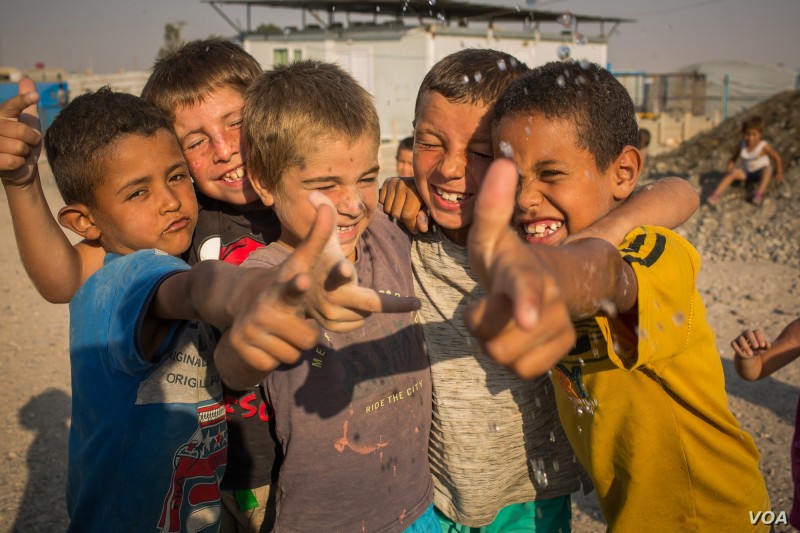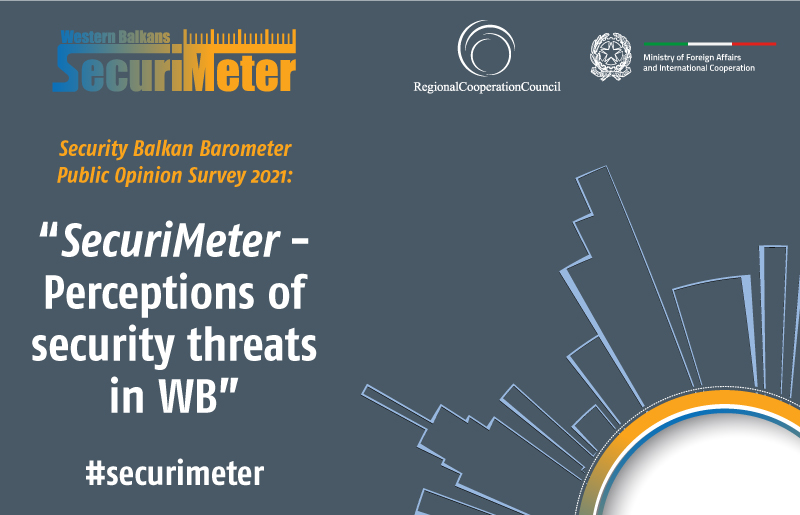- Home/
- News
Isolated Among Extremists: Conditions Deteriorate for Children of Islamic State

Photo: Hundreds of children of IS militants have died in or on their way to al-Hol camp this year, pictured on Aug. 26, 2019 in al-Hol Camp, Syria. (VOA/Yan Boechat)
AL-HOL CAMP, SYRIA - Small children usually flock to photographers as they snap pictures in refugee camps. They make silly faces, flash victory signs and jostle to be in the front of the shot.
But nothing is usual about the children of Islamic State militants in Syria. At the Ain Issa camp, some children of foreign IS fighters shun the camera while others flash their middle fingers or pretend-shoot the cameraman as if their hands were guns.
They are among the more than 50,000 children of militants now stuck in camps after the last IS stronghold in Syria fell in March. Most are with their mothers, the wives and other female relatives of the fighters of the so-called “Caliphate.” Their fathers are almost all dead or in jail.
The international media have called these camps “incubators” for an IS resurgence. But aid organizations say that despite their exposure to violence and extremism, children in these camps can be rescued, rehabilitated and reintegrated into the outside world. However, action must be taken soon to be effective, they add, as the trauma deepens day by day.
The children are mostly under 12-years-old, according to UNICEF, and were born in IS-controlled areas or brought in by parents. Some were coerced or forced into supporting the group. Little boys were told they will grow up to be militants, and little girls wear veils for modesty, even when they are under 10 years old.
“All are victims of deeply tragic circumstances and egregious violations of their rights,” said UNICEF Executive Director Henrietta Fore in a statement. “They must be treated and cared for as children.”
Isolation
The camps in Syria that house families of IS fighters look like other refugee camps in the region. Tents stand in rows on isolated patches of land in the desert. They are surrounded by fences and guarded by local security forces.
But unlike many camps that have housed millions of other displaced Syrian people, these camps are locked. The residents are considered a threat, and they are not allowed to leave for their own safety and for the safety of the surrounding communities, according intelligence officers stationed at the camps.
Inside one camp last month, four security guards were attacked, six tents were burnt to the ground and two female residents were killed, presumably for violating “rules” enforced by women in the camps who have set up their own IS-styled morality police.
These groups, known as “Hisbah” force women to wear full face veils and forbid consorting with “infidels” such as local security forces.
The children have few or no memories outside of war zones populated with extremists.
As dust storm turns the air brown in the Ain Issa camp, children and adults cover their faces and duck behind tents or water tanks. When the storm passes, the children resume playing with the cameraman.
They don’t make “bang, bang” sounds as they pretend to shoot him. They hiss lightly like the sound of a bullet as it sails by your ear and imitate the mechanical cracking of automatic weapons. These are sounds of real war.
Safety
The psychological damage from growing up around extreme violence can be devastating, according to doctors, but at the camps, providing mental health care—or even an education—for children is a distant dream.
“First we need to make them safe,” says a security guard as he drives through the al-Hol camp, a sprawling sea of tents housing more than 70,000 people including the families of some of IS’s most devoted fighters. “Then we can start educating the children.”
Supplying safety is especially difficult as winter approaches, he says. Al-Hol camp is desperately short of medical supplies and hundreds of children have died here, or on their way here, this year. Food and clean water are scarce, and and the funding available is not nearly enough.
“Of course it's harder to get funding for these camps,” the man explains. “Every one knows they are the families of IS.”
Solutions?
Finding a permanent solution for the families has become an urgent security issue, according to Mustafa Bali, the spokesman for the Syrian Democratic Forces, the U.S.-backed Kurdish-led forces securing northeastern Syria.
“We are tightening security,” he tells us in an interview in Kobane. “But this is a political problem for 50 countries, not ours alone.”
The majority of the families are Syrian or Iraqi and authorities say they are trying to negotiate with their local communities to return them to their homes. But since the final battles with IS, the camps’ populations have not reduced significantly.
Thousands of the families are from outside the region and local authorities have repeatedly called on the international community to take back their citizens. Inside the camps, many women say they are eager to go back to their countries, even if it means going to jail.
“The military here told me I can go to Germany,” says Elina Frizler, a German national living in Ain Issa camp with her two children, both born in IS-controlled Syria. “But how can I go if Germany won’t take us? How can we live here?”
Repatriation?
Some countries have repatriated some of their nationals, particularly orphans.
Repatriating all the children, however, would require also repatriating their mothers, according to Syrian authorities. Some of the women are still vocal IS devotees, but others have renounced the group or claim to have been tricked into joining in the first place.
“It is not like we [could] speak out against [IS] or else we would be killed,” says one woman with a deep red veil over her face. She is British, but her citizenship has been revoked, she says. She is also of Sudanese origin, she adds, and hopes to be sent out of the camp and to Sudan.
But many countries are reluctant to take back adults — fighters or mothers that are here considered non-combatants — citing security concerns and the difficulty of prosecuting alleged crimes that took place in foreign lands then occupied by IS. Kurdish authorities say they lack the capacity to hold trials and care for all the foreign fighters and their families.
The woman in the red veil says, on one hand, joining IS was a mistake. She was lead to believe she was moving to a truly Muslim land operating under Islamic Law. What she found in Syria could be more accurately described as a militant group, she says.
On the other hand, she adds, any Muslim person that did not travel to IS-controlled areas when they heard of the new “Caliphate” probably lacked either faith or courage.
“Many people couldn’t come,” she explains, “They were scared.”
Source: Link


 Development of specialized PCVE web site is funded by EU FUNDS CN 2017-386/831 - "IPA II 2016 Regional Action on P/CVE in the Western Balkans"
Development of specialized PCVE web site is funded by EU FUNDS CN 2017-386/831 - "IPA II 2016 Regional Action on P/CVE in the Western Balkans"